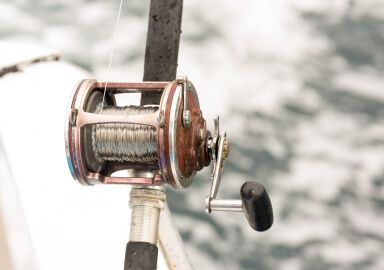Kob
Kob are a potentially large, marine coastal top fish predator of the Indo-Pacific region.
View 9 listings
9
listings
–
price starting from
2
countries
–
to the nearest trip
Where and When?
The typical kob is an Indo-Pacific coastal marine fish found along the shores of many countries and continents including Africa, India, China, Australia and Japan. It is usually found at depths between 0-100 m. (0-328 ft) and seems to be most common at depths of 20-40 m. (65-131 ft.). Some adults enter and stay for extended periods in estuaries or close inshore while most juveniles are found only in these areas.
Generally, they are found in regions with sandy or muddy bottoms and their large eyes favour hunting at night or in turbid water conditions. While not usually associated with solid structure, they often aggregate around places such as wrecked ships or rocky outcrops during their, often, long migrations. Kob are present in some areas throughout the year, but often they only pass through or reach areas during their migrations. They naturally feed mostly after dark but, particularly in muddy waters, they can be induced to feed during daylight, though early mornings and evenings are usually best. They feed throughout the year and also during their migrations.
About Kob
The best known “kob” fish is Argyrosomus japonicus and it has a plethora of colloquial names in the various localities within its distribution. Around Australia it is known as the mulloway, jewfish, butterfish or kingfish, in South Africa it is called the kob, dusky kob, kabeljou or salmon and in Japan o-nibe. Kob are members of the Sciaenidae family, which has several similar species, but the true kob is the largest member and an important recreational angling species where it is found.
This silvery and bronze-green fish is torpedo shaped with a sloping head, large eyes and a big mouth at the front of the head. The teeth are many, but small and backward curved. Kob can attain 2 m. in length (79 in.) and a mass of 77 kg. (170 lbs.). They feed mostly on fish, as adults, but younger individuals often eat benthic invertebrates. Kob are an inshore marine species that favours turbid (muddy) waters and often enters estuaries. Juveniles tend to stay in estuaries or close inshore. As a shoaling species, this species undergoes important spawning migrations that are often well known and closely followed by sport anglers.
How to Catch?
Within their distribution range, kob are highly sought after by sport anglers. This has sadly resulted in severe stock depletion in many areas and often restrictions such as size and bag limits have been introduced. In Australia, some stocks seem to be increasing again while, in many areas, stocks remain depressed with few large fish being caught. Kob are generally viewed as “difficult to catch” but can be caught from shores, in estuaries and harbours and in many coastal areas, from small boats and charters.
Most angling is carried out using medium to heavy spinning equipment and live, dead or artificial baits can be used to good effect. Shore or pier angling using live or dead baits of fish, squid or shrimp, work well and recently plastics, such as “paddle tails”, have been found to be very effective when water clarity is good. Boat fishing using jigs or plastics can work well, particularly after dark, where this is practical. Large kob are now rare in most areas, but the capture of one is a memorable and exceptional experience to be remembered by some or envied by other anglers.






